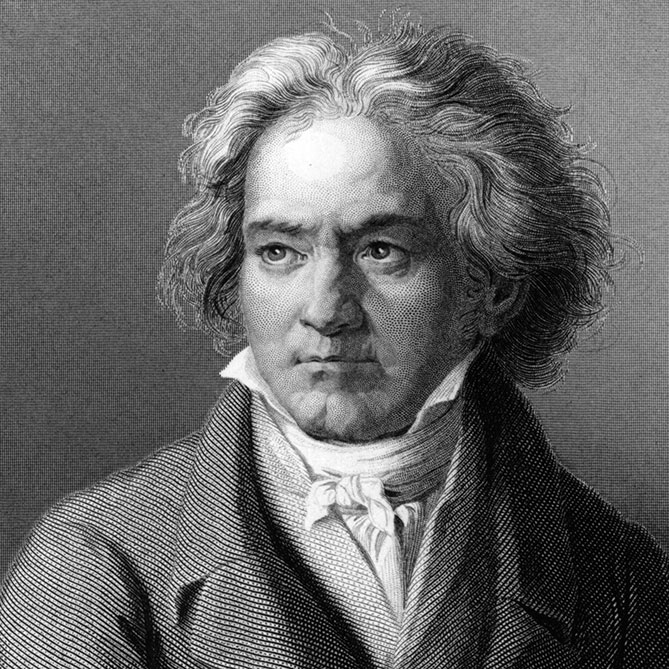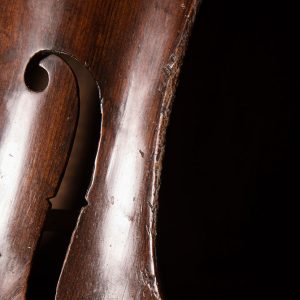
Opening the Beethoven A Major Cello Sonata: Obsessing Over the First Five Bars
Guest Blogger
The five Beethoven Cello Sonatas are iconic for a number of reasons. First and foremost, they’re some of the first pieces to include the cello in a true duo partnership, something the violin had been enjoying for a long time.
While the first two sonatas (Op. 5, 1 and 2) are actually listed as Sonata for Piano and Violoncello, things have changed by the third sonata, Op. 69 in A Major, with the cello now getting top billing. The sonata was written during Beethoven’s middle period and immediately one can sense his expansive creativity at work in full force.
The opening is one of the more notorious openings in all of the cello literature. It starts with the famous melody played by the cello alone, like a soliloquy.

Ludwig van Beethoven Werke, Serie 13: Fur Pianoforte und Violoncell, Nr. 107, (Leipzig: Breitkopf und Hartel, n.d. [1863], 65-94. Public doman.
What looks simple contains a host of difficulties and issues to work out.
Tempo
As seen from the example above, Beethoven indicates Allegro ma non tanto for the tempo indication. ‘Tanto’ means “not so much”, so the implication is fast, but not overly so.
Whatever your exact tempo is, securing a consistent and correct tempo at the onset is quite difficult given that Beethoven starts with two half notes and a dotted half. It’s tricky to feel just exactly where the pulse is. Generally, players tend to take the first three notes in one tempo, then when the quarters start, they blend into a different tempo altogether. Next, in bar 4, and the end of bar 5, there’s a strong temptation to slow down. So, with all that, we’ve now had roughly 4 different tempos in the first six measures.
The key is to subdivide. Put the metronome at either a quarter pulse, or even an eighth pulse. Feel the smaller divisions in the half notes and dotted half, which will then transition smoothly into the quarters without changing the tempo. Even in performance, always think subdivisions. This will keep you honest and give a clearer sense of the opening melody, not to mention giving your pianist something to grab onto.
Despite keeping a steady pulse through the first five bars, many cellists slow down a tiny bit before the low E in measure 6. Their rationale is that it’s the end of the phrase, so it’s appropriate to set the downbeat of the sixth measure. But, in actual fact, it’s not the end, it’s just the beginning, and the cello part neatly hands off the melody to the piano. By slowing down, you’re making it difficult for the pianist to come in with any stability, especially since they’re coming in on the fourth beat.
Fingerings
While fingerings are entirely personal, there is a general consensus that one plays the majority of the opening theme on the G string. Many players start in first position, then shift up to fourth position by the second note. Some performers, however, play the opening A in fourth position on the C string, preferring to cross over a string rather than shift. The thing to keep in mind about whatever fingering you decide to use is to keep it simple. Keep the shifts silent, and string crossings as smooth as possible. Listen to when the piano has the theme in measure 13. Emulate the sound of the piano, in order to keep it as straightforward and pure as possible.
Assuming you are using the common fingering of starting in first position on the A and shifting up to fourth position for the E, make sure you prepare your left arm for the impending shift. During the last third of the A, your left arm should be starting the shifting motion and initiating the shift. Your second finger (as well as the rest of the hand) can start to open up once the arm starts to move and take over the shift, once you leave your first finger. Practice this slowly and keep the movements as efficient and smooth as possible.
Vibrato
Many cellists forgo vibrato on the opening theme to create a more “pure” tone. As is well documented, vibrato did not have the ubiquitous presence it has now in string playing, serving as more of an ornament than a constant. Of course, this is a personal choice, but a little vibrato can be nice and shouldn’t disrupt the line too much.
The real advantage to using vibrato is that it can mask the wolf-tone that can crop up on the F# on the G string (third note of the theme). It’s a real let-down for that beautiful theme to be corrupted by a stuttering wolf-tone.
Bowings
Beethoven’s slur markings, if taken at face value, can be very impractical. They can often stretch over entire phrases, leaving one to think he wants the entire passage slurred. Generally speaking, those long slurs are more phrase markings than actual specific slur markings.

Ludwig van Beethoven, Sonata for Violoncello and Piano in A Major, Op. 69, scan of manuscript facsimile, Beethoven-Haus, Bonn.
From the manuscript, we see that the first bar is slurred, and the next two bars are slurred. If we were to follow that exactly, you’d need to get way out to the tip for the second bar, if you’re starting down bow. Beethoven’s slur doesn’t work the best in that scenario, so many players break the slurs up.
An interesting alternative is to start up bow. Change to down bow on the second bar and keep Beethoven’s original slur intact all the way to the fourth bar. I find that it supports the phrasing quite nicely.
Of course, there are numerous solutions and possibilities, and it’s inevitable that you’ll change your mind, as I have, many times. Whatever your decide, it should support the phrasing.
Phrasing
For something so simple, this opening theme can be very frustrating; a fair amount details to keep track of in just five measures. Like the fingerings and bowings, there are a variety of ways to shape this passage.
The general shape of the phrase shows the notes moving up, gradually working their way down, a little coda, before finally setting on the low, pedal E. My advice is to get out of the way of the notes—go with the shape. We can very easily over-phrase it making it incomprehensible. Beethoven has done most of the work for you; allow the notes to go where they want to. Use your bow speed and variances in arm weight to define the shape as you want it.
It is very possible to obsess over these five bars and turn it into something that it’s not, when, in reality, it’s a simple, catchy tune. While keeping track of the details, don’t forget to step back and see the bigger picture, and enjoy this gift that Beethoven has given us cellists.
 Cellist, Brian Hodges is an active soloist, chamber musician, and teacher. With his wife, Betsi Hodges, he has given recitals across the US, Canada and Italy. Brian is Associate Professor of Cello and Coordinator of Chamber Music at Boise State University and is principal of the Boise Baroque Orchestra. He performa regularly with Classical Revolution: Boise, which has been featured at the Idaho Shakespeare Festival and on Radio Boise. Originally from San Antonio, Texas, he soloed with the San Antonio Symphony as a winner of the Young Artists Competition. He went on to study at the Eastman School of music earning his Bachelor of Music degree in cello performance and stayed on to complete his Master of Music degree in cello performance where he was the teaching assistant to Marcy Rosen. He recieved his Doctoral Musical Arts in cello performance from the University of North Carolina at Greensboro where he was a member of the graduate piano trio in residence. He has been on the faculties at the Townsend School of Music at Mercer University in Georgia, as well as Spring Arbor College and Albion University and has served as co-director of the Jackson Symphony String Academy in Jackson, MI. During the summers, he has been on faculty at the Green Valley Chamber Music Festival in Las Vegas, the Summer Music Institute in San Antonio, TX, and the String Camp of Rochester.
Cellist, Brian Hodges is an active soloist, chamber musician, and teacher. With his wife, Betsi Hodges, he has given recitals across the US, Canada and Italy. Brian is Associate Professor of Cello and Coordinator of Chamber Music at Boise State University and is principal of the Boise Baroque Orchestra. He performa regularly with Classical Revolution: Boise, which has been featured at the Idaho Shakespeare Festival and on Radio Boise. Originally from San Antonio, Texas, he soloed with the San Antonio Symphony as a winner of the Young Artists Competition. He went on to study at the Eastman School of music earning his Bachelor of Music degree in cello performance and stayed on to complete his Master of Music degree in cello performance where he was the teaching assistant to Marcy Rosen. He recieved his Doctoral Musical Arts in cello performance from the University of North Carolina at Greensboro where he was a member of the graduate piano trio in residence. He has been on the faculties at the Townsend School of Music at Mercer University in Georgia, as well as Spring Arbor College and Albion University and has served as co-director of the Jackson Symphony String Academy in Jackson, MI. During the summers, he has been on faculty at the Green Valley Chamber Music Festival in Las Vegas, the Summer Music Institute in San Antonio, TX, and the String Camp of Rochester.
Subjects: Repertoire
Tags: Beethoven, chamber music, repertoire, Sonata
